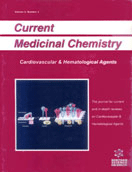Abstract
Co-localization of urocortin (Ucn) and its putative receptor (CRF-R2b) in peripheral tissues, including the heart and vasculature, suggests an important role for the peptide as a regulator of cardiovascular function. Indeed, Ucn gene expression and / or immunoreactivity are increased in the ventricles of patients with failing hearts. Hemodynamic effects of Ucn include vasodilation and increases in cardiac contractility, coronary blood flow and conductance, cardiac output and heart rate. Due to the likely benefit of such actions in states of cardiac compromise, our laboratory has recently reported the first study examining the effects of Ucn in ovine experimental heart failure. We observed profound and sustained cardiovascular (reduced cardiac preload and afterload and increased cardiac output), hormonal (inhibition of vasopressin, endothelin and renin-angiotensin-aldosterone axis) and renal effects (natriuresis, diuresis and augmented creatinine clearance). Such effects incorporate many of the therapeutic goals of heart failure management. Recently, two further members of the CRF peptide family have been identified. In contrast to Ucn, Ucn II and III are reported to be highly selective for the CRF-R2β, displaying negligible affinity for CRF-R1. As such, one could speculate that these new peptides might produce the salutary effects in heart failure as seen with Ucn, without concomitant activation of the stressrelated hormone ACTH (mediated via CRF-R1). Clearly, further study is essential to confirm whether manipulation of this new family of peptides (especially Ucn II and Ucn III) offers benefit to the syndrome of heart failure with potential clinical applications in humans.
 9
9













